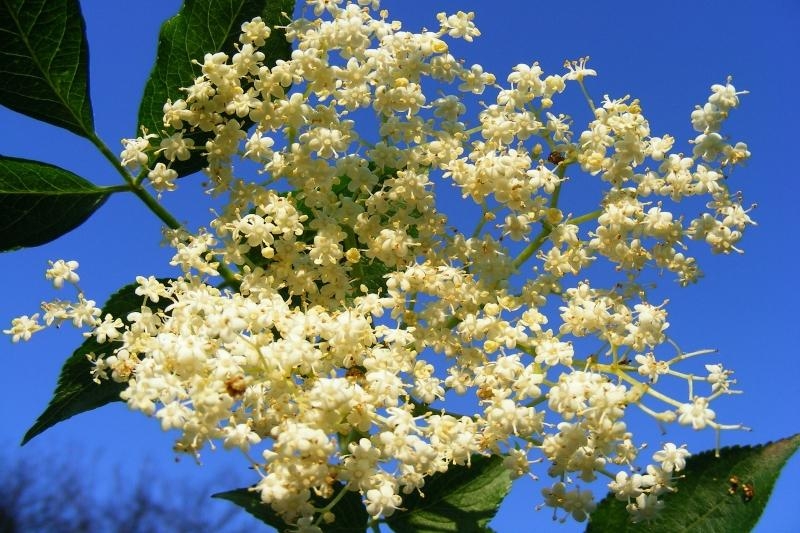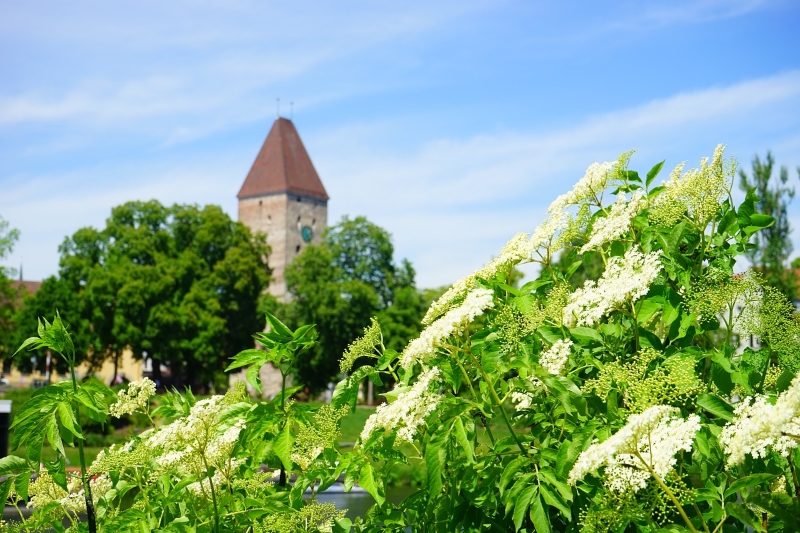
Nearly all herbal books refer to the elder as “the medicine chest of the country folk”. As a detoxification aid, elderflower may enhance liver function by causing the body to sweat our liquids and eliminate metabolic waste.
Elderflower and health benefits
Elderflower is comprised of several essential vitamins, including Vitamin A, the B-1, B-2, and B-3 complex, and Vitamin C. The flower is rich in bioflavonoids, that are most commonly known for their antioxidant, anti-cancer, anti-inflammatory and antibacterial properties. Elderflower also contains chlorogenic acids, which may help with allergies, regulate blood glucose levels and have a laxative effect on the body.Antioxidants, like those contained in elderflower, are essential to protecting the body from free radical damage. Free radicals can damage cell reproduction, causing profound changes linked with an increase risk for cancer.
Elderflower and folk medicine
Elderflower has been used in traditional medicine all over the world in many different cultures due to its antiseptic and anti-inflammatory properties and used for detoxification purposes. Elderflower has antibacterial and antiviral properties and may also help alleviate some allergies and boost the functioning of the immune system.It also can be used to treat the following: Flu, Bronchitis, Diabetes, Constipation, Rheumatism and joint inflammation, Eye irritations.

Elderflower and dietary
As an oral rinse, elderflower can be used for its antiseptic properties as a mouthwash and gargle. Since elderflower can lower blood sugar levels, use by diabetics should be monitored. Elderflower can cause gastrointestinal disturbances, such as nausea and diarrhea, especially when consumed in large amounts.
Elderflower and presence
This tall flowering shrub is found throughout large swathes of Europe, Africa, Asia and North America, and is a common sight in the UK countryside. Different species of elder have berries that vary in color from black or bluish black to red and even yellow or white. Its flower is white to pale cream in color.

Elderflower and safety
While elderflower is typically found to be safe for consumption, the leaves, seeds, twigs, and roots are toxic and can lead to the build up of poisonous cyanide in the body. Note: All but the black elderberries are toxic when eaten raw, so should be cooked prior to use.Also note that elder is somewhat similar in appearance to several other toxic plants found in Britain, so you need to be absolutely sure it is elder you’ve found before harvesting.
(adsbygoogle = window.adsbygoogle || []).push({});
Elderflower and foods
For centuries, dried flowers on the elderberry shrub have been used to create a healthy, restorative tea. To brew a fresh cup, add three to four grams of elderflower to five ounces of hot water and let steep for 10 to 20 minutes. When preparing elderflower tea, only use the dried flowers. Long used in herbal medicine, skincare and as a flavouring in foods and beverages – including elderflower syrup, jam, liqueurs, tea.
Elderflower and cosmetics
Some natural beauty products even incorporate elderflower into a skin tonic or ointment. Doing so is believed to help fade freckles and skin blemishes.
Become part of the CK community by uploading and sharing traditional or personal recipes. Once you've logged in you can upload, save and print your dishes online.